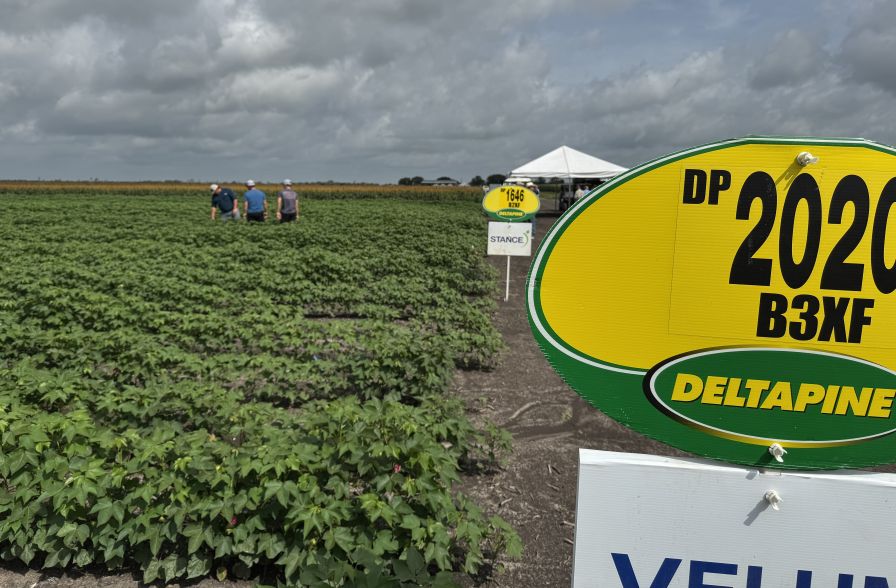Plexus: New York Futures Come Under Pressure
After the market had closed in a narrow band of just 413 points for 21 straight sessions – between 99.21 and 103.34 cents – it finally made its move today and broke out to the downside, taking out important support levels in the process. Increasing volume on down days (over 20’000 contracts on Monday and Thursday) as well as the fading inversion between Dec and March (144 points vs. 269 points last week) are validating this move.
With harvest in the Northern Hemisphere making rapid progress, supply is starting to overwhelm tepid mill demand and the much talked about support by the Chinese Reserve doesn’t seem to be potent enough to arrest the decline. Although NY futures have now fallen several cents below the Chinese support level when compared on a CIF China basis, the problem is that Chinese Reserve buying offers only limited and indirect support to the international market.
The Chinese Reserve auctions are so far aimed at domestic cotton and although interior prices in China are still holding up fairly well, just below the comparatively high 19’800 Yuan/ton support price, any arbitrage opportunity with outside growths is limited to the availability of import quotas. Although Chinese mills and traders have been actively pursuing imports from various origins in recent weeks in an effort to fill existing ‘sliding scale’ quotas before they expire at the end of the calendar year, time is running out to conclude business that would allow cotton to arrive before the December deadline. Beyond that there is so far only the customary tariff-rate quota (TRQ) of 894’000 tons for 2012 on the horizon, as the government has yet to announce any additional imports. The Chinese Reserve may at some point procure cotton in the international market, especially if prices were to fall further, but for now the “Chinese put” seems too small to hold against the tide of a rrivals all over the globe.
Today’s US export sales report reminded traders of how slow the pace of sales currently is, as commitments increased by just 60’100 running bales net last week, with China taking 46’900 of those bales. Total sales for the season still run right around 8.0 million statistical bales, of which 0.8 million bales were sold under ‘optional origin’. With China expected to move to the sidelines in a few weeks, the US has its work cut out to find a home for its remaining exportable surplus. Not only is there a lot of competition from other origins, but the quality that will be left after existing commitments have been applied is probably going to be a mixed bag.
The market will have to do its job and find a level at which US cotton can compete against other growths. Although NY futures have dropped to 97 cents, prices may have to decline further in order to attract business. As we have stated before, the certified stock is probably not going to be made up of premium quality like last year, but it will instead contain plenty of high grade/short staple cotton. Therefore, in order for the certified stock to become attractive, prices will either have to fall to a level at which mills would want it or the board needs to go to full carry in order to entice a taker, both of which is not the case at this point.
Earlier this week a massive dust storm or ‘haboob’ swept across West Texas, reminding locals of the ‘dust bowl’ in the 1930s. Although damage to the open crop seems to be limited, it was a reminder that the severe drought that has gripped the region is far from over. Just a few weeks ago the US Climate Prediction Center confirmed that ‘La Ni?a” conditions have returned for a second year in a row. This means that we are likely to see similar weather patterns as this season going forward, with the West Texas drought lingering on and Australia looking at another ‘wet year’. The Northern Hemisphere is likely to experience another very cold and blistery winter, which will be exacerbated by a colder than normal polar air mass due to recent volcanic activity and the current negative phase of the Pacific Decadal Oscillation (PDO).
So where do we go from here? The market will probably remain on the defensive in the near term, until prices reach a level at which the certified stock becomes more attractive in terms of cash cotton, or carry returns to the board. However, it is not all doom and gloom and there are certainly some bright spots to consider, such as the stronger than expected retail sales in the US, which last month were led by clothing stores at +8.3%. Also, inflation is starting to flare up despite the slow economy, with the US Producer Price Index (PPI) increasing at about 7% per annum, while the Consumer Price Index (CPI) rose nearly 4% per annum. As mentioned last week, once investors perceive that their hoarded cash is losing out against inflation, they may start chasing tangible assets again. And while China may take a backseat over the next couple of months, there will be more import quotas coming this season and the Reserve is likely to absorb a sizeable amount of cotton into its stock pile, which over time will act in support of the market.









